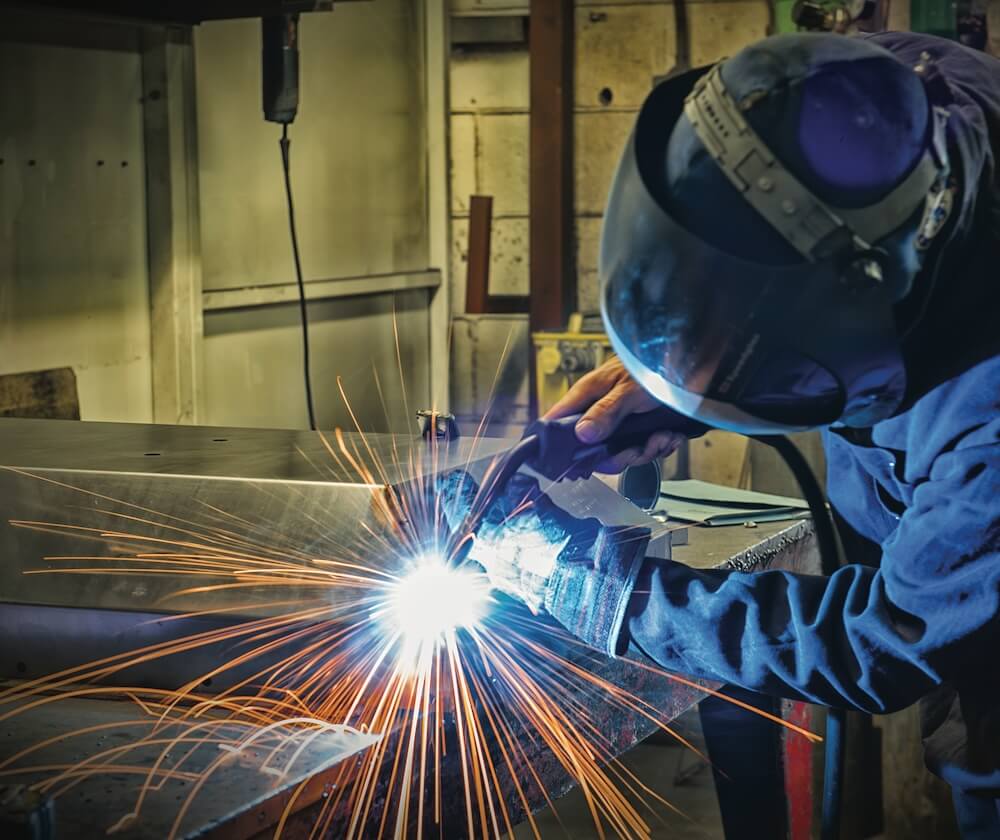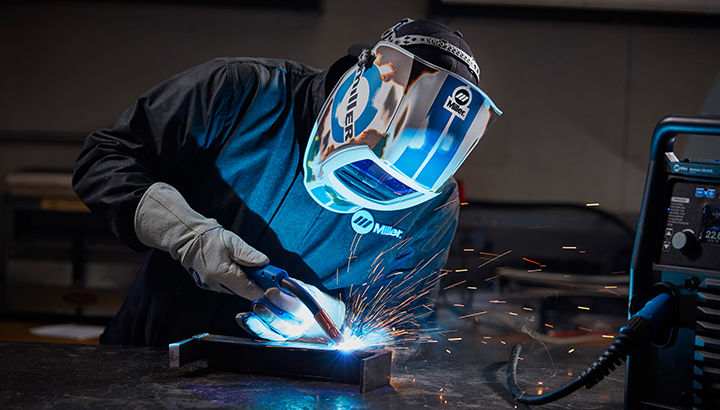Have you seen signs of incomplete fusion? Montana Mobile Welding and Repair explains how to detect them
Everything about Welding: Key Insights Into Techniques and Finest Practices for Success
Welding encompasses a variety of strategies, each matched for particular materials and applications. Understanding these approaches, such as GMAW, SMAW, and TIG, is necessary for attaining suitable results. Additionally, the best devices and safety and security methods can not be overlooked. As prep work and fixing play essential duties in the welding procedure, mastering these aspects can substantially enhance the top quality of the end product. What are the essential aspects that guarantee an effective weld?
Recognizing Different Welding Techniques
Welding strategies include a range of approaches, each fit to specific applications and products. Amongst one of the most typical techniques are Gas Steel Arc Welding (GMAW), Shielded Metal Arc Welding (SMAW), and Tungsten Inert Gas Welding (TIG) GMAW, additionally referred to as MIG welding, is popular for its speed and versatility, making it excellent for thin materials. SMAW, or stick welding, is preferred for its simplicity and performance in exterior atmospheres, particularly with thicker metals. TIG welding uses precision and control, making it ideal for intricate work and non-ferrous steels (Welding). Each strategy has its unique advantages and factors to consider, permitting welders to select the most effective method based upon the project's demands, material kind, and wanted outcomes. Understanding these methods is essential for successful welding
Vital Welding Tools and Devices
While numerous welding strategies require specific skills, the best devices and tools are equally crucial for achieving top quality outcomes. Important welding devices includes welding devices, which vary depending upon the technique-- such as MIG, TIG, or stick welding. Protective gear, consisting of aprons, helmets, and handwear covers, assurances security and comfort during the process. On top of that, fixtures and clamps help safeguard products in position, ensuring accuracy in welds. Consumables like welding poles, wire, and shielding gas are likewise vital elements that influence the quality of the weld. Moreover, devices such as cutters and mills promote surface area preparation and post-weld ending up, adding to a professional end result. Purchasing premium equipment ultimately boosts the efficiency and effectiveness of welding jobs.
Safety Practices in Welding
Proper safety techniques are vital in the welding industry to shield workers from prospective threats. Welders should wear proper individual protective tools (PPE), including safety helmets with appropriate shading, handwear covers, and flame-resistant clothes. Ample ventilation is crucial to reduce direct exposure to unsafe fumes and gases created throughout the welding procedure. In addition, workers need to be learnt the appropriate handling of welding equipment to avoid crashes. Fire safety procedures, such as maintaining flammable materials far from the welding location and having fire extinguishers readily offered, are necessary. Routine inspections of devices and work spaces can help identify potential risks prior to they bring about accidents. By sticking to these safety techniques, welders can develop a more secure working atmosphere and lessen dangers linked with their profession.
Preparing Products for Welding
Preparing products for welding is an important action that greatly affects the top quality and honesty of the end product (Montana Mobile Welding and Repair Welding). Correct prep work entails cleansing the surface areas to remove contaminants such as oil, corrosion, and dust, which can jeopardize the weld. Techniques such as grinding, fining sand, or utilizing solvents are commonly utilized to achieve a clean surface. Furthermore, ensuring that the materials fit together snugly is necessary; spaces can cause weak welds. It's likewise important to take right into account the placement and positioning of the elements, as this will affect the ease of welding and the last result. Ultimately, choosing the suitable filler material and ensuring compatibility with the base steels is essential for attaining solid, long lasting welds
Tips for Achieving High-Quality Welds
Accomplishing high-grade welds requires focus to detail and adherence to finest techniques throughout the welding process. Proper joint preparation is necessary, guaranteeing surface areas are tidy and free from contaminants. Selecting the proper filler product and welding technique based upon the base steels is crucial for optimal bonding. Preserving consistent traveling rate and angle while welding can advertise and stop flaws uniformity. In addition, regulating warmth input is essential; extreme warm can bring about warping and deteriorated joints. Consistently checking the welds during the procedure permits prompt adjustments if needed. Ultimately, employing suitable post-weld treatments, such as cleaning and stress relief, can improve the resilience and honesty of the weld, inevitably making sure an effective result.
Troubleshooting Common Welding Issues
Welding commonly presents difficulties that can influence the quality and stability of the end product. Typical problems such as porosity, irregular weld beads, and overheating can emerge, each needing specific repairing techniques. Recognizing these troubles is essential for welders to improve their skills and attain excellent outcomes.
Porosity Issues Clarified
Although porosity can usually be neglected, it continues to be an essential problem in welding that can compromise the honesty of a finished product. Porosity describes the visibility of tiny gas pockets within the weld bead, which can lead and compromise the joint to premature failure. This issue commonly develops from impurities, moisture, or incorrect securing gas protection throughout the welding procedure. To reduce porosity, welders should confirm that the base products are completely dry and tidy, utilize appropriate protecting gases, and keep regular welding parameters. Regularly examining the tools and setting can also aid recognize potential concerns prior to they materialize in the weld. Resolving porosity effectively is vital for attaining solid, durable welds that meet quality requirements.

Inconsistent Weld Beads
Inconsistent weld grains can greatly influence the top quality and stamina of a completed item. Numerous elements contribute to this issue, including inappropriate traveling speed, wrong amperage settings, and irregular electrode angles. When hop over to here the welder relocates too rapidly, a bead might show up slim and lack infiltration, while relocating as well slowly can trigger excessive accumulation. In addition, utilizing the wrong amperage can lead to either undercutting or extreme spatter, both of which compromise weld stability. The welder's method, such as inconsistent lantern activity, can additionally bring about unequal grain appearance. To alleviate these problems, welders need to focus on preserving stable, regulated movements and making sure correct tools setups to achieve uniformity in their welds. Consistency is key to accomplishing solid and reputable welds.
Getting Too Hot and Bending Issues
Too much warmth throughout the welding procedure can cause substantial overheating and buckling problems, impacting the architectural stability of the work surface. These issues often show up as distortion, which can endanger positioning and fit-up, making further setting up challenging. Factors adding to overheating include the selection of welding specifications, such as voltage and travel rate, along with the kelly welding sort of material being bonded. To reduce these issues, welders should maintain constant travel speed and suitable heat input while checking the workpiece temperature. Furthermore, preheating or post-weld heat treatment can help reduce tensions brought on by quick air conditioning - Montana Mobile Welding and Repair Welding. Regular inspection and adherence to best practices are essential in avoiding overheating and making certain the durability and dependability of bonded frameworks
Often Asked Concerns
What Are the Occupation Opportunities in the Welding Industry?
The welding industry uses varied profession opportunities, including placements as welders, examiners, instructors, and engineers. Specialists can operate in production, building, aerospace, and auto markets, benefiting from strong need and affordable salaries in numerous roles.
How Can I Boost My Welding Rate Without Giving Up High Quality?
To enhance welding speed without sacrificing quality, one ought to exercise effective techniques, maintain devices, optimize setups, and improve hand-eye coordination. Normal training and seeking comments can likewise substantially add to achieving quicker, top quality welds.
What Qualifications Are Readily Available for Welders?
Numerous qualifications exist for welders, consisting of those from the American Welding Culture (AWS), the National Facility for Building And Construction Education And Learning and Study (NCCER), and numerous industry-specific companies. These credentials improve employability and demonstrate ability effectiveness.
How Does Welding Affect the Features of Metals?
Welding affects the residential properties of metals by altering their microstructure, which can lead to changes in toughness, hardness, and ductility. Warm input and cooling prices throughout the procedure considerably impact these product characteristics.
Can I Weld Dissimilar Metals With Each Other?
